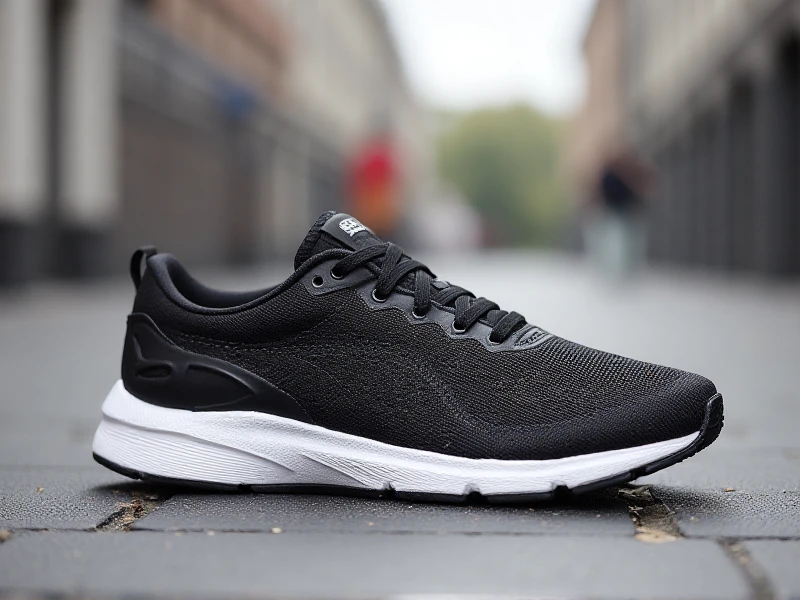The Ultimate Guide to Finding the Best Women's Running Shoes for Your Feet
2025-06-01

Choosing the right pair of women's running shoes isn't just about style; it's a critical investment in comfort, performance, and injury prevention. With countless brands and models flooding the market, finding the perfect fit can feel overwhelming. This guide cuts through the noise, helping you understand what truly matters when selecting shoes designed specifically for a woman's stride and biomechanics. Discover the key features, technologies, and fit considerations to transform your running experience.
Understanding the Unique Needs of Women's Runners
Women's running shoes aren't just scaled-down versions of men's models. They're engineered with distinct anatomical differences in mind. Key design considerations include:
1. Narrower Heel & Midfoot: Women generally have narrower heels relative to their forefoot. Quality women's running shoes feature a snugger heel counter and a more contoured midfoot to prevent slippage and blisters.
2. Shorter Achilles Lever Arm: This anatomical difference influences gait. Shoe designs often incorporate features like increased flexibility through the arch and a slightly different heel-to-toe drop to accommodate a more efficient roll-off.
3. Lighter Weight & Different Density Foams: Manufacturers frequently use slightly softer or lighter-weight cushioning foams in women's specific shoes to compensate for the average difference in weight and impact forces.
4. Specific Upper Fit & Volume: The shape and volume of the upper are tailored for the shape of the female foot, particularly in the toe box and instep height.
Key Features to Look For in Women's Running Shoes
To find your ideal match, prioritize these essential elements:
1. Proper Fit (The Non-Negotiable Rule):
Shop Late Afternoon: Feet swell throughout the day and during runs.
Measure Both Feet: Feet are rarely identical in size. Fit the larger foot.
Thumb's Width Rule: Ensure at least a thumbnail's width (roughly half an inch) between your longest toe and the shoe's end.
Heel Lockdown: Your heel should feel secure without excessive pressure. No significant slippage.
Midfoot Snugness: The shoe should feel comfortably snug over the arch and midfoot, not tight or constricting.
Toe Box Freedom: Your toes need space to splay naturally during toe-off. Avoid pressure points.
2. Support & Stability (Based on Your Gait):
Neutral Shoes: Ideal for runners with efficient biomechanics needing cushioning and flexibility.
Stability Shoes: Incorporate features like medial posts, guide rails, or structured midsoles to gently correct mild-to-moderate overpronation (foot rolling inward excessively).
Motion Control Shoes: Offer maximum support for severe overpronation. Consult a specialist if you suspect deep overpronation.
(Need help? Visit a specialty running store for a gait analysis).
3. Cushioning & Responsiveness:
Maximal Cushion: Plush, thick midsoles absorbing high levels of impact – great for comfort on long runs or heavier runners.
Moderate Cushion: Balanced cushioning and responsiveness – the versatile workhorse for most daily training.
Minimal Cushion: Lightweight with ground feel – preferred for speedwork, racing, or minimalist enthusiasts.
Responsive Foams: Technologies like PEBA, TPU, or nitrogen-infused foams provide energy return, propelling you forward.
4. Durability & Outsole Design:
Durable Rubber: Look for strategically placed high-abrasion rubber (carbon rubber, firmer compounds) in high-wear areas like the heel and forefoot.
Flex Grooves: Essential for a smooth transition and natural foot movement.
Tread Pattern: Varies based on terrain. Minimal tread for roads, deeper lugs for trails. Most daily trainers have a versatile all-surface outsole.
5. Breathable & Secure Upper:
Engineered Mesh: Lightweight, breathable, and provides structure.
Strategic Support: Overlays or knit structures in key areas enhance support without bulk.
Internal Wrap Systems: Some designs offer seamless, internal panels for a sock-like, secure fit.
Choosing Based on Your Running Goals
Daily Training: Prioritize comfort, durability, and moderate cushioning. A reliable workhorse like the Zephyr Lite Trainer offers versatility.
Long Distance/Race Day: Seek lightweight performance and responsive cushioning. Look for racing flats or marathon-specific shoes.
Trail Running: Essential for off-road! Prioritize aggressive tread, rock plates for underfoot protection, and durable, potentially water-resistant uppers.
Recovery Runs: Maximal cushioning shines here, providing cloud-like comfort and significant impact absorption on tired legs.
Beyond the Shoe: Pro Tips for Women Runners
Replace Regularly: Running shoes lose cushioning and support long before they look worn. Replace every 300-500 miles – track your mileage!
The Right Socks Matter: Technical, moisture-wicking socks prevent blisters. Seamless toes are ideal. Cotton is not your friend!
Consider Orthotics/Insoles: If you need custom foot support, ensure your chosen running shoe has a removable insole to accommodate them correctly.
Listen to Your Body: Mild discomfort might break in; pain never does. Don’t ignore persistent aches – your shoes could be the culprit.
Conclusion: Your Perfect Stride Awaits
Finding the best women's running shoes is a personal journey. There is no single "best" shoe for everyone – only the best shoe for you. By understanding your foot shape, gait mechanics, planned running surfaces, and personal preferences for cushioning and fit, you can make an incredibly informed choice. Visit a specialty running store knowledgeable about women’s needs, prioritize fit above all else, and don't be afraid to test multiple options.
Investing time in finding the perfect pair is an investment in your running health and enjoyment. When your shoes feel like an extension of your feet, supporting your miles effortlessly, you unlock the true joy and freedom of the run. Step into gear specifically designed to empower your stride. Your next personal best starts with the right foundation. Lace up and conquer your goals!
Category: